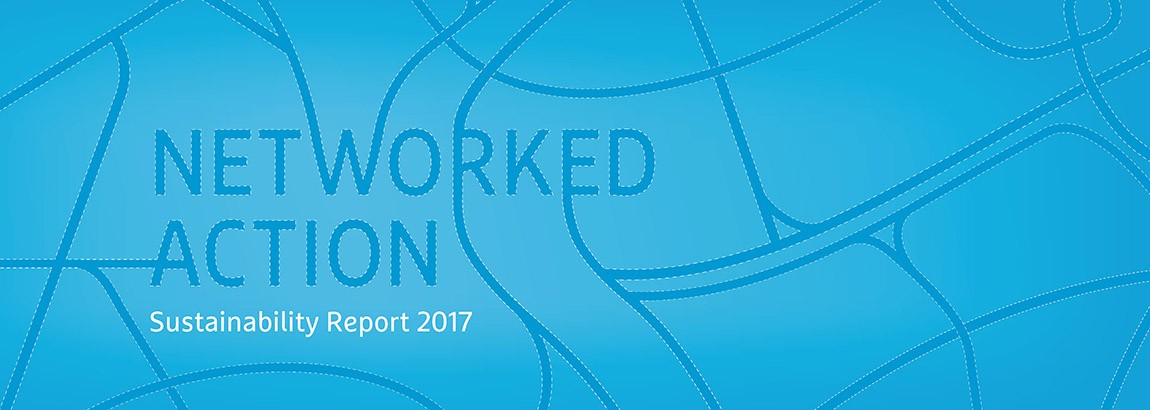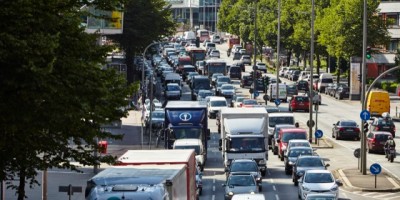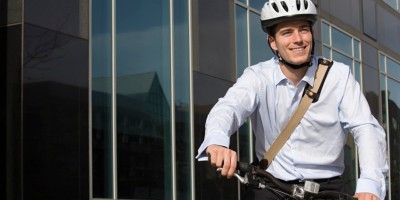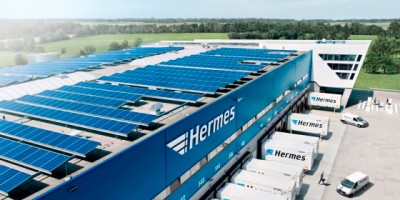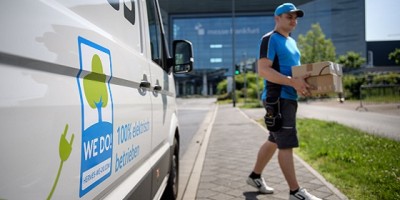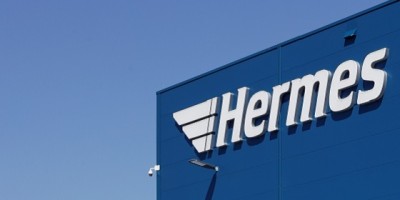Climate-friendly Logistics
On the right path to climate-friendly logistics
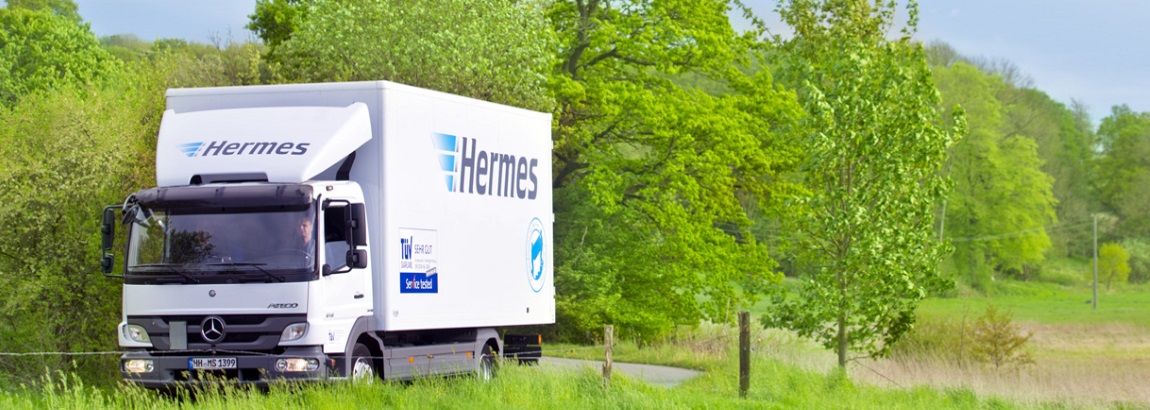
The biggest carbon polluter at Hermes is the transport sector. This is why there is a very strong focus here. As a global transport service provider, we will make our networks as efficient as possible in order to reduce CO2 emissions along the global supply chain.
This happens in different ways in procurement and distribution logistics. Global procurement logistics can be carried out by ship, plane, truck or train and is managed by a complex supplier network. Here, together with the other companies in the Otto Group, we exert our influence to enhance the carbon efficiency of our transportation service.
In terms of business with Otto Group clients, the largest share carbon emissions besides procurement logistics is in distribution. In distribution logistics, we distinguish between ‘line haul’ and the ‘final mile’. In contrast to procurement logistics, where we hardly have any influence on optimising transport by air or sea, we can influence fleet composition and line and route planning in distribution logistics. With a mix of intelligent route planning, the use of alternative drive technologies and cooperation with strong partners, we will achieve our target of a 30% reduction in volume-adjusted CO2 emissions in distribution logistics by 2020 compared to the base year of 2006 (Scope: Otto Group).
Successes in distribution logistics
In distribution, Hermes is well on the way to achieving its reduction target. We have already reduced volume-adjusted CO2 emissions by 25% since the base year 2006 (Scope: Otto Group business).
CO2 emission (in tonnes) from HE/HG/HES in relation to Otto Group business (scope: Otto Group business)
The figures are volume-adjusted compared to the base year 2006.
| 2006 (base year) | 2013 | 2014 | 2015 | 2016 | 2017 | 2006 vs. 2017 (reduction) | |
| Sourcing (HG): | 103,728 | 85,868 | 68,639 | 64,079 | 57,360 | 53,319 | 49% |
| Distribution logistics (HG/HES) | 63,957 | 51,986 | 52,605 | 51,561 | 48,120 | 47,993 | 25% |
| Sites (HE/HG/HES) | 12,057 | 9,781 | 9,110 | 8,720 | 7,857 | 6,602 | 45% |
| Mobility (HE/HG/HES) | 1,890 | 1,009 | 1,166 | 1,116 | 1,057 | 1,048 | 45% |
| Total: | 181,632 | 148,644 | 131,520 | 125,476 | 114,394 | 108,962 | 40% |
This was achieved through some targeted measures: The ‘line haul’ truck fleet has gradually been modernized and route planning optimised. All trucks in our own fleet comply with the Euro 6 standard.
In the final mile we are testing alternative drive systems and are already using them for delivery. Our focus here is on electromobility. In 2016, for example, we deployed six converted electric transporters from e-mobility specialists emovum in Hamburg’s inner-city and in 2015 deployed a Mercedes-Benz Sprinter with electric drive in Berlin specially built for parcel service. In November 2017, Hermes launched a pilot project on e-mobility, in the course of which around 50 pre-production vehicles, among others, will go into operation in 2018. Based on these findings, the gradual expansion of the e-fleet to more than 1,500 vehicles will begin in 2019.
We are also testing innovative alternative delivery concepts in urban areas, such as cargo bike deliveries, e-Scooters and delivery by robot, in other words, (partially) autonomous delivery. In particular, the wider use of electric cargo bikes in conjunction with microdepots offers good opportunities in urban areas and we are planning to significantly intensify our activities here.
The common platform for electric mobility and alternative, emission-free drive technologies and delivery concepts at Hermes is our project Urban Blue, which coordinates the individual projects centrally. Urban Blue's goal is to deliver emission-free by 2025 in Germany's 80 largest cities. This explicitly includes greenhouse gas emissions: We are planning to expand electromobility, using renewable ‘green’ electricity in accordance with the strict criteria of the Green Electricity Label, the eco-electricity label of environmental associations.
In road transport, it is essential to combine intelligent tour planning with efficient driving. As part of our employee training courses on environmental protection at Hermes, we are also focusing in particular on fuel-efficient driving. We also provide the training documents for employees at our contractual partners.
With the help of appropriate software, we calculate the optimal route for all delivery routes in the 2-man handling of Hermes Einrichtungs Service. Hermes Germany Hermes Germany has introduced a new, fully-digital tour planning system for parcel deliveries in Germany. This makes the delivery process even more precise and efficient. A new software is used on Android tablets from Huawei. From the beginning of May through to the end of October, more than 11,000 devices will be successively distributed to all couriers in Germany. This means that the system is ready for use throughout Germany in time for the coming Christmas season. Initial tests of the system had already taken place in 2016. A second major pilot test at the end of 2017 with around 1,000 machines at several courier bases was a success.
As part of the implementation of the new ‘Bluefield’ site concept for Hermes' own locations (LCs and depots), we will also significantly increase efficiency on line hauls and thus significantly reduce transport kilometres.
While our measures have led to a significant reduction in volume-adjusted CO2 emissions per consignment unit in distribution logistics, this is offset by a sharp increase in consignment volumes in recent years. In relation to all clients, including those outside the Otto Group, absolute CO2 emissions in distribution logistics have risen by around 30,000 tonnes, or 27%, since 2013. During the same period, the corresponding volume in our parcel shipments rose by 38%.
CO2 emissions (in tonnes) from HE/HG/HES in relation to all clients.
The values indicate the nonquantity-adjusted absolute CO2 emissions.
| 2013 | 2014 | 2015 | 2016 | 2017 | |
| Sourcing (HG): | 149,960 | 134,199 | 103,738 | 102,661 | 102,693 |
| Distribution logistics (HG/HES) | 112,396 | 113,906 | 120,436 | 128,772 | 142,620 |
| Sites (HE/HG/HES) | 10,950 | 13,397 | 13,824 | 14,260 | 12,776 |
| Total (without mobility) | 273,306 | 261,502 | 237,998 | 245,693 | 258,090 |
Joint steps in procurement logistics
In international procurement logistics, the responsibility of Hermes International, we have to take account of complex supplier networks. Hermes has no means of transport of its own here, but uses the capacities of shipping companies and airlines. Hermes Germany's greatest lever is therefore the creation of transparency regarding the respective transport modes (ocean-going vessel vs. air freight) with regard to CO2 emissions, so that clients can design their procurement logistics in a CO2-optimised manner. In procurement logistics, a cut in CO2 of 49% was achieved by the end of 2017 compared to 2006 volume-adjusted by the tonnage transported (Scope: Otto Group business).
CO2 emission (in tonnes) from HE/HG/HES in relation to Otto Group business (scope: Otto Group business)
The figures are volume-adjusted compared to the base year 2006.
| 2006 (base year) | 2013 | 2014 | 2015 | 2016 | 2017 | 2006 vs. 2017 (reduction) | |
| Sourcing (HG): | 103,728 | 85,868 | 68,639 | 64,079 | 57,360 | 53,319 | 49% |
| Distribution logistics (HG/HES) | 63,957 | 51,986 | 52,605 | 51,561 | 48,120 | 47,993 | 25% |
| Sites (HE/HG/HES) | 12,057 | 9,781 | 9,110 | 8,720 | 7,857 | 6,602 | 45% |
| Mobility (HE/HG/HES) | 1,890 | 1,009 | 1,166 | 1,116 | 1,057 | 1,048 | 45% |
| Total: | 181,632 | 148,644 | 131,520 | 125,476 | 114,394 | 108,962 | 40% |
Since the beginning of 2015, Hermes, together with other leading logistics companies, shippers and shipping companies, has been involved in a B2B industry initiative called Clean Cargo Working Group (CCWG) to reduce fuel consumption and CO2 emissions in sea freight. The aim is to continuously improve the carbon balance by a process of measuring, evaluating and reporting.
Unadjusted absolute emissions in procurement logistics for all clients have fallen by around 47,000 tonnes or 32% since 2013. During the same period, the corresponding tonnage in sourcing shipments rose by 98%. Despite the strong volume growth, the fact that absolute CO2 emissions have fallen, is largely related to the ongoing technical modernisation of the means of air and ocean freight transport.
In addition, changes in the sources of supply have led to a reduction in the distance travelled per tonne of goods transported. The sharp decline in absolute CO2 emissions from 2014 to 2015 is also due to the strategic withdrawal from market business in the road division from 2015 and the concentration on the Otto Group business.
CO2 emissions (in tonnes) from HE/HG/HES in relation to all clients.
The values indicate the nonquantity-adjusted absolute CO2 emissions.
| 2013 | 2014 | 2015 | 2016 | 2017 | |
| Sourcing (HG): | 149,960 | 134,199 | 103,738 | 102,661 | 102,693 |
| Distribution logistics (HG/HES) | 112,396 | 113,906 | 120,436 | 128,772 | 142,620 |
| Sites (HE/HG/HES) | 10,950 | 13,397 | 13,824 | 14,260 | 12,776 |
| Total (without mobility) | 273,306 | 261,502 | 237,998 | 245,693 | 258,090 |
